Case Study › No. 13Venedocia, Ohio

{ more photos below… }
As we approach the tiny hamlet of Venedocia, Ohio we see a vulture eating some road kill. The highway is quiet, so we park the car in the middle of the road and film the happy creature devouring his lunch. For five minutes or so we stand there with our cameras. No traffic, no sound, no wind. It is an overcast morning with ambient gray light filling the flat landscape. Finally, we hear a large tractor trailer barreling down on us from a mile or so away. As it approaches, we move the car to the side of the road and watch. The vulture stays with his feast until the truck is just a few yards away, then it jumps onto the side of the road while the truck completely flattens the road kill. The enchanting silence of the moment has ended so we drive into downtown Venedocia, and the vulture returns to his meal.

In an attempt to attract visitors some small towns have begun to promote themselves as “cute” or “cool” or “hip.” Towns that cater to tourists are defined by advertising campaigns that homogenize everything they touch. Small towns like Venedocia are are not promoted as tourist destinations which is one reason why we find them so valuable to visit. No lamppost banners or clever wayfinding graphics here!
When we compare Venedocia today to an 1874 map of the town there is virtually no change in the size or layout of the town. There are no gift shops or cute boutiques here. In fact, the only venue that appears to be even vaguely commercial is the post office that has a for sale sign out front. There are only about two dozen houses here, but an impressive Methodist church anchors the southern end of town, a reminder of better times past. There are some buildings that may have been shops in days gone by but they are now occupied as residences.
We had never been to Venedocia. However, Pookie, a beloved family member — now deceased — grew up here. He told us many stories, and we once saw a snapshot taken of him in the yard of his childhood home in the early 1900s. One picture showed him dressed as a cowboy at about age six holding a revolver aimed at the photographer. So we went to Venedocia like pilgrims visiting a shrine. Might we even identify Pookie’s old homestead?
As we arrive in town, one particular house draws our attention. It is abandoned but it appears to be the house we remember from the cowboy picture of Pookie. We stand on the side porch. We are standing on the spot where he stood over a century ago with his gun posing for his picture and threatening to kill the photographer.
Do we take pictures to document the places we visit or to make art? When we visited Venedocia, Ohio (as with everywhere we go) we documented our sojourn with film and print photography so we could share it with others and to be able to reflect on our experience in the comfort of our studio. For us this kind of exercise is autobiographical. Though we bring a lifetime of biases and sensitivities to each Main Street, our goal is to assess each place as accurately and respectfully as possible. If this is photojournalism, you do not want to bias your reportage with prejudice. You want to depict a place as accurately as possible. Since we have roots in Ohio we see ourselves as somehow still belonging in here, even though our careers took us away from Ohio many years ago.
Our pictures and films are viewed internationally on the Internet and elsewhere. What does our audience see in these images? Hopefully, they are not seen merely as art. We search for valuable places and when we find them we want to depict them accurately. We are fascinated with the way buildings are sited and the layers of change that have been made to the streets and the buildings with architectural modifications and signs, as well as improvements or deterioration. Our photographs document the layers of history that we see. As one very wise professor once said: You have a crossroads with a barn on one corner and a house on another corner. How do you know that some day this will not be Chicago?
When we visit places like Venedocia we may be in town for only an hour or two but we do not see ourselves as outsiders gawking at something exotic but rather as fellow citizens sharing life in a real street. We are not creating pretty art to decorate museum walls. Art is some personal abstraction of the truth. Art tends to be artificial. We see our job as capturing reality and showcasing it. Photographs of real places that are occupied by real people deserve accurate documentation, though some would argue that all art, including journalistic photography, is abstraction, and that an image of something can never embody the whole truth about a subject.
If you look at our images of Main Streets across Ohio you may begin to think that America went off the track at some point, that like obsolete machinery our small Ohio towns corroded and became devoid of the usefullness they once enjoyed. We want to show places as they really are today. If we were to see our photographs primarily as art they would become less truthful.
If you choose to distance yourself from a real place you can call a picture of this place art. Perhaps the harder you try to depict something accurately, the more you personalize the experience and in so doing you may put your deepest imprint on the image. A conductor whose intention is to play a symphony as a composer meant it to be performed tries to enter the soul of the composer and in doing so produces the most personal statement possible. The composer is an artist but isn’t the conductor also an artist? Perhaps s/he is more likely an interpreter of the art of the composer.
If we see one of our photographs of Venedocia as more than a document or a work of art, might we consider it instead to be a prayer of some sort, a petition we make in the solitude of an abandoned Main Street? Prayer consist of four parts: praise, confession, gratitude and supplication. Our photographs praise the beauty of the place, reveal its sins, and acknowledge our gratitude for our being there. Finally, a photograph might suggest possibilities for what the streetscape could still become. Hopefully our work on the street will be edifying to the subject, the photographer, and to the audience for whom we create this work.
Out of respect for the subject matter we have felt that if we were to continue visiting Ohio Main streets we needed to acquire a residence in a small Ohio town in order to see the streetscapes of Ohio as insiders. In order to get deeper into the context maybe need to be rooted there in a more committed way. We half-jokingly chat about buying this abandoned house of Pookie and restoring it. Perhaps this is the next step in our Ohio safari.
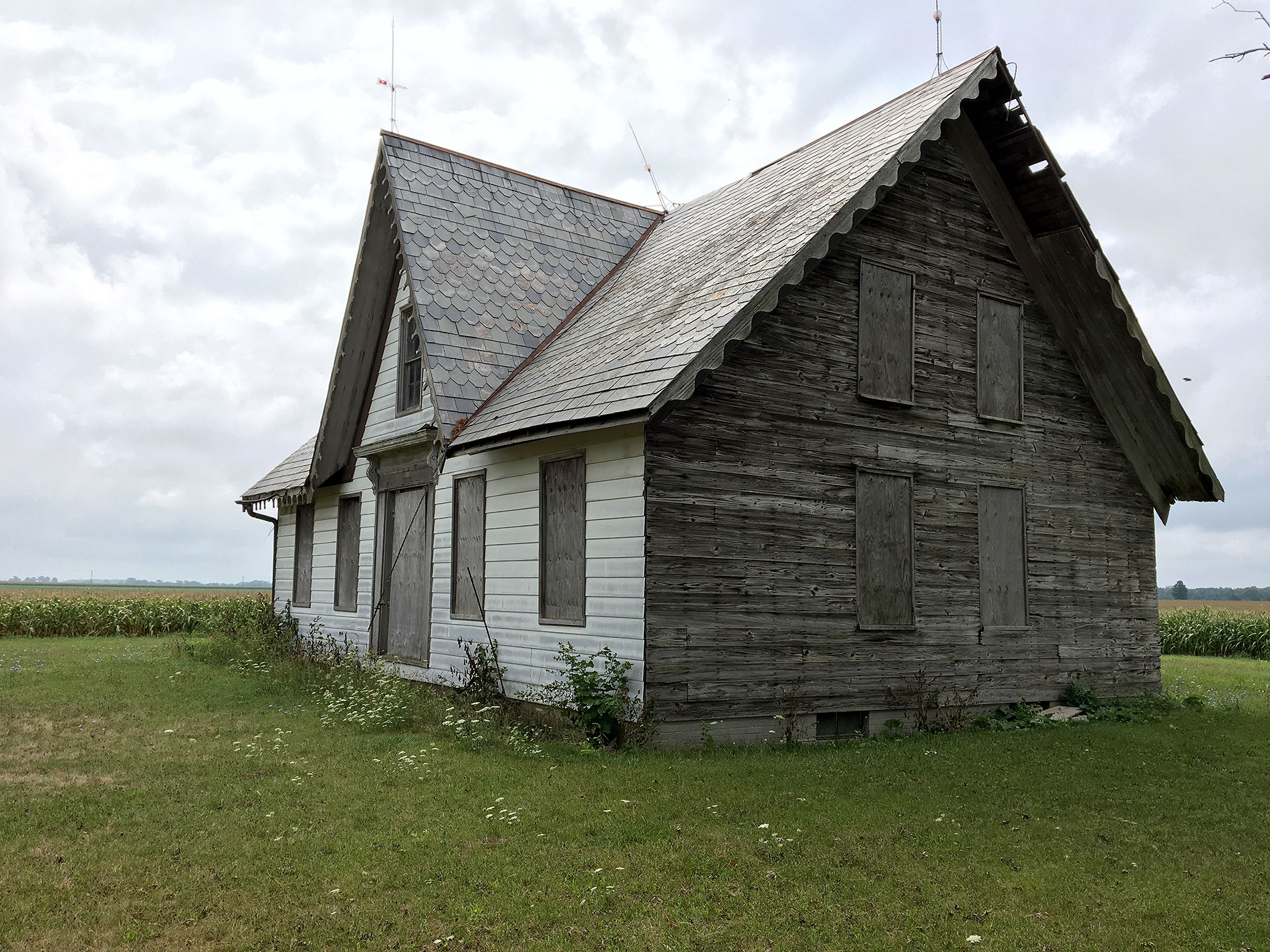
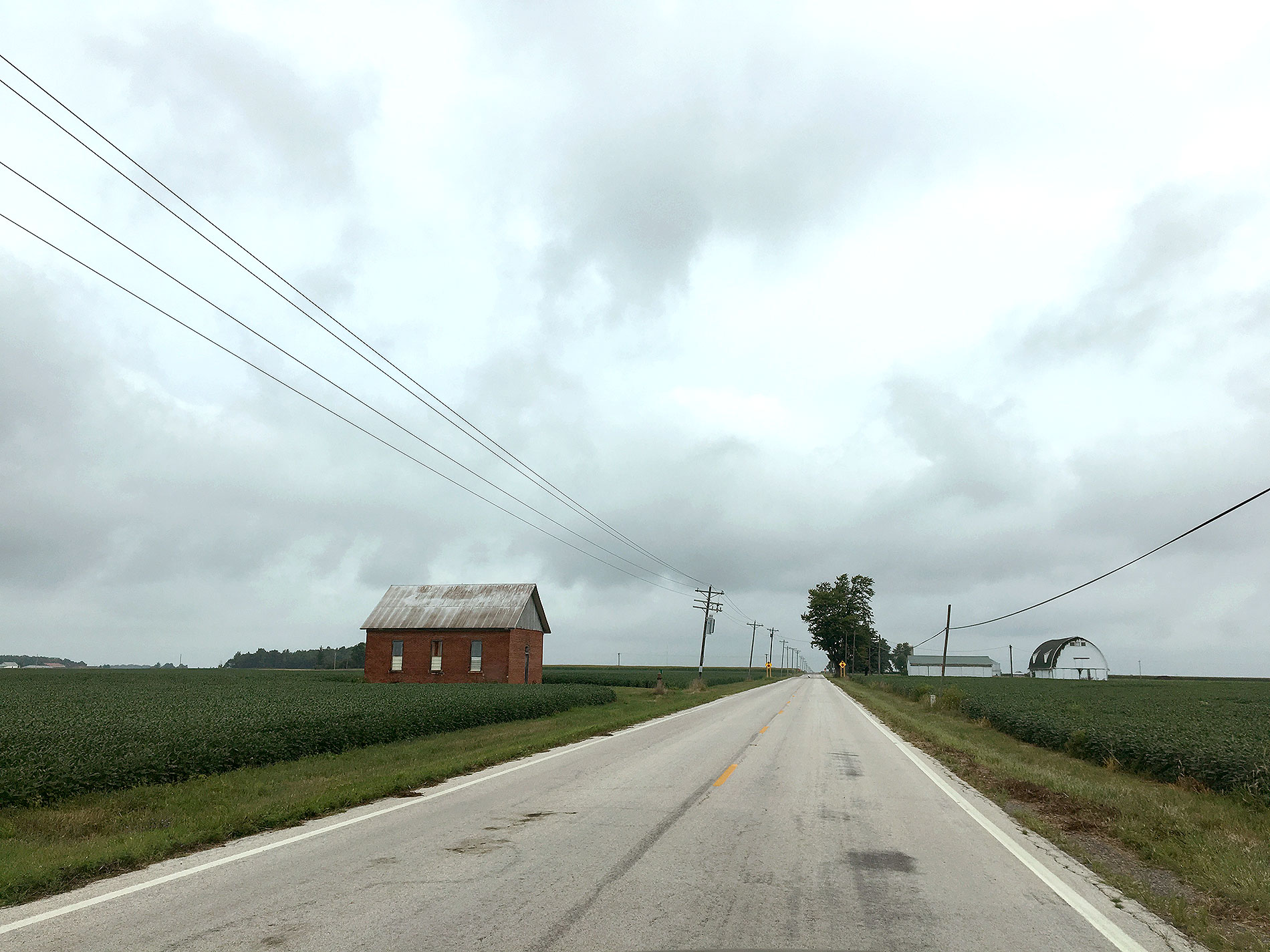
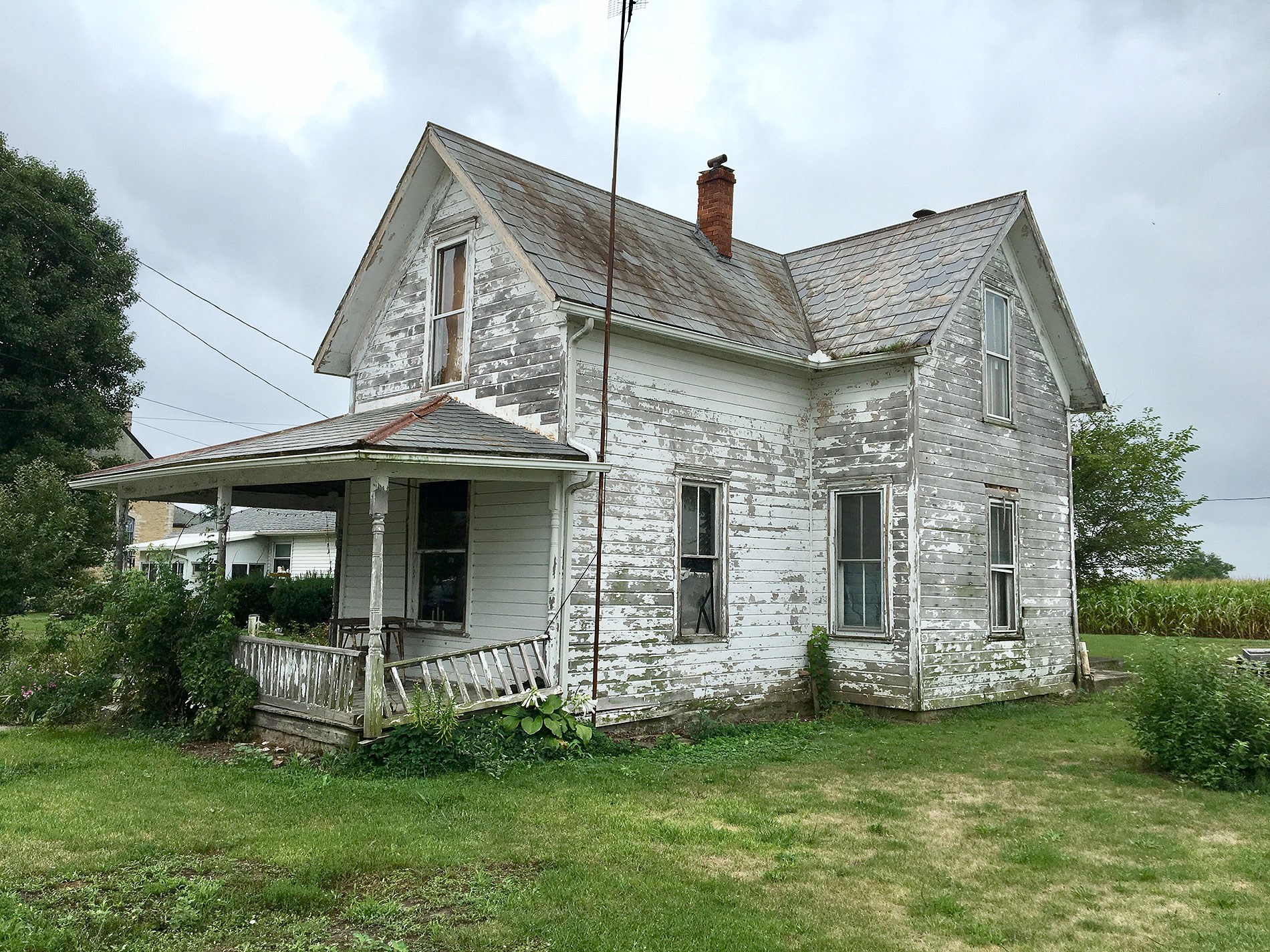

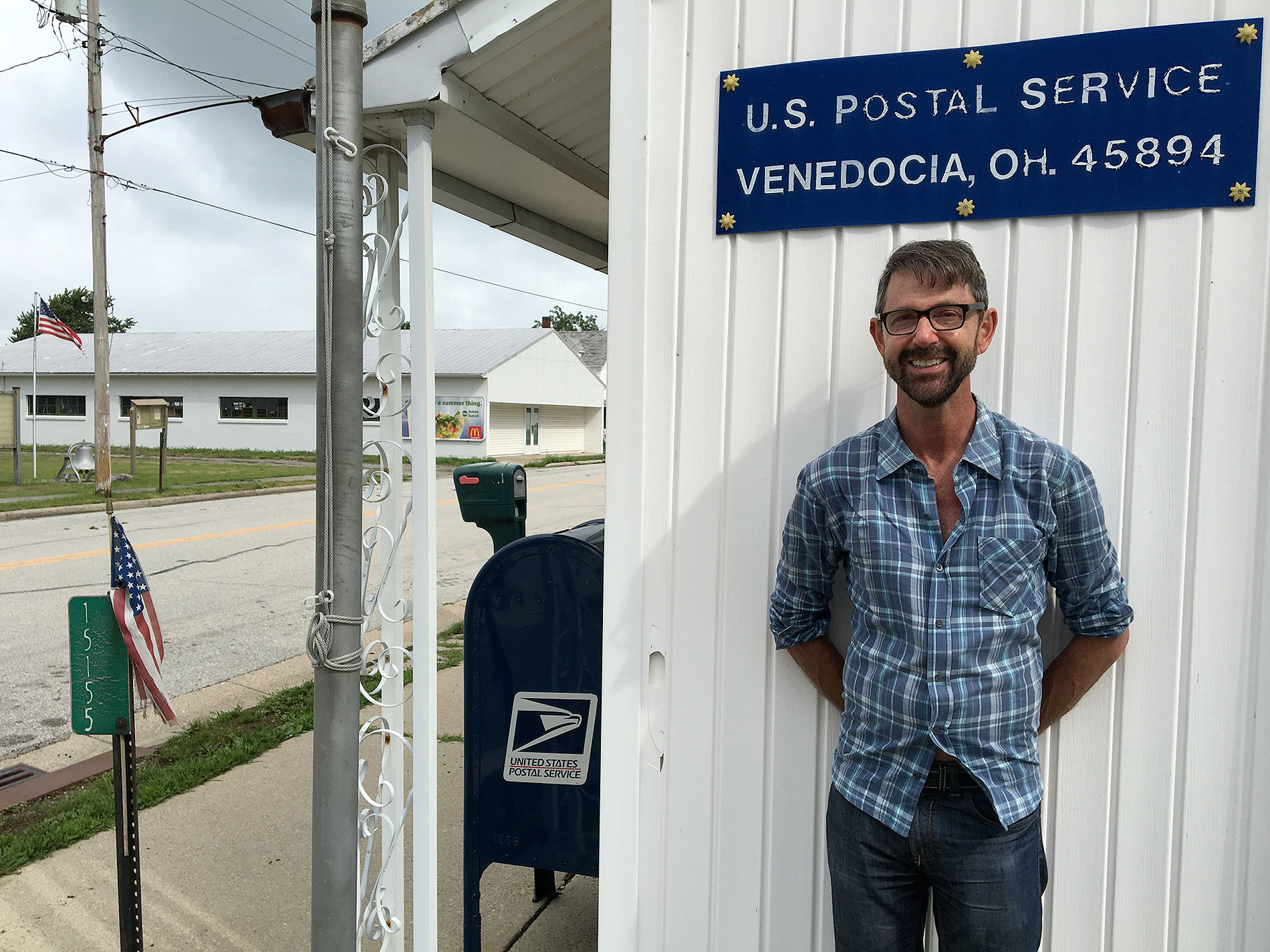
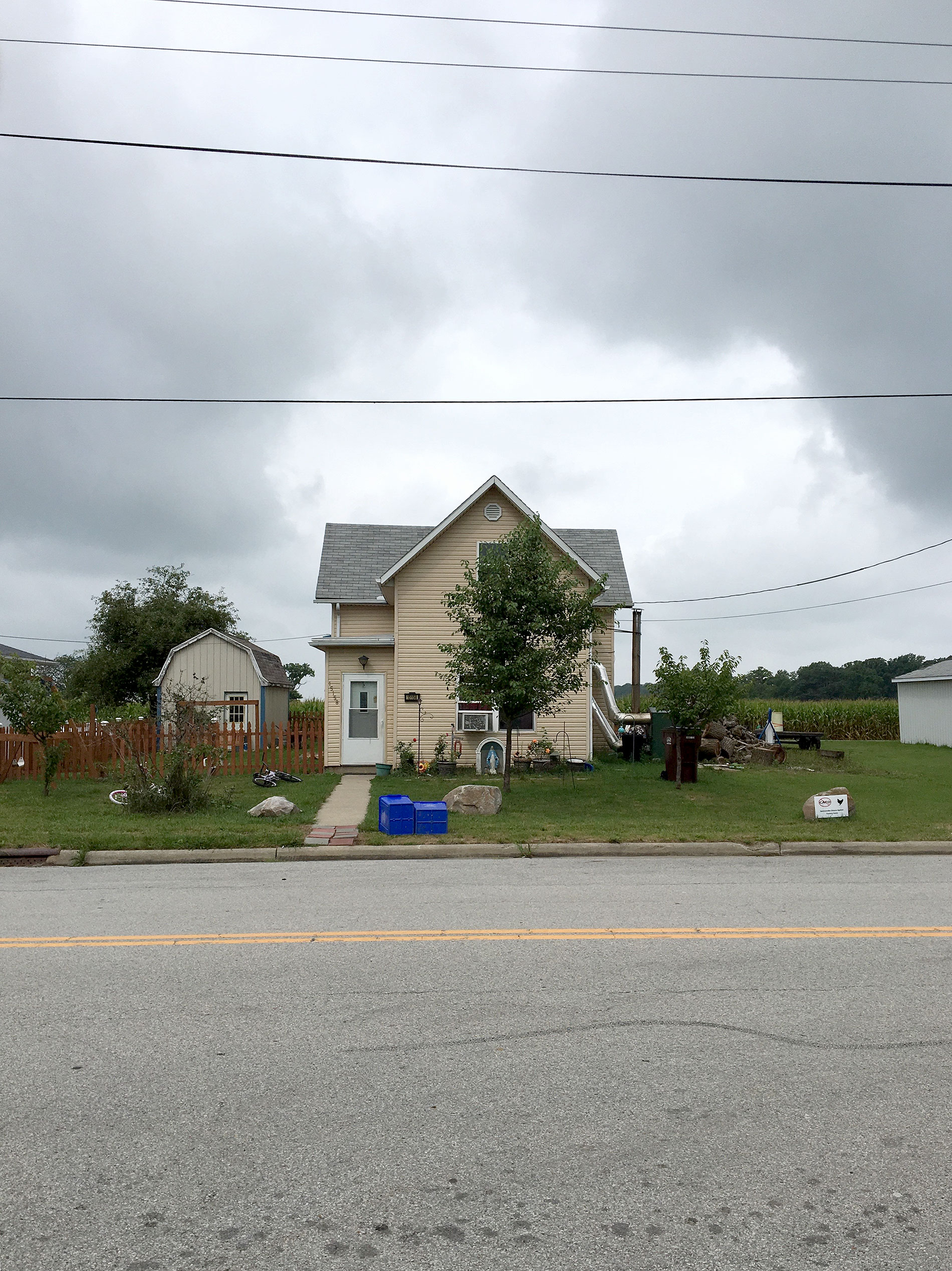

After reading your text, I was expecting so much more of Main Street Venedocia, OH. I too have roots in this small town, many ancestors buried in Horeb Cemetery. You could have driven and filmed one end of Main St to the other, I wish you had.
I have wanted to get up there for years, and illness is now making it less likely that I ever will.
I would like to Thank you, for documenting “Main St”, so many to do, preferably before progress makes them generic, as progress frequently does.
Dear Ms. Ernst, Thank you for your comments. We spent a quiet morning in Venedocia. It is a special place surrounded by miles of cornfields. I like your idea of a more extensive filming project. A close relative was born there so we wanted to see his old house which is across the road from the post office. You have inspired us to keep documenting our old Main Streets.